What Is Content Marketing?
Content marketing is the process of planning, creating, and sharing valuable content to attract and engage a specific audience. To build relationships that eventually contribute to business results.
It focuses on solving problems and answering questions. Not necessarily directly selling products or services.
Common types of content include:
- Blog posts
- Videos
- Podcast episodes
- Infographics
- Ebooks
- Newsletters
- Social media posts
- Webinars
The goal?
To build trust with your audience and establish your expertise. So that when your audience needs a solution you offer, they'll be more likely to turn to you first.
For example, look at how Dove uses content marketing:
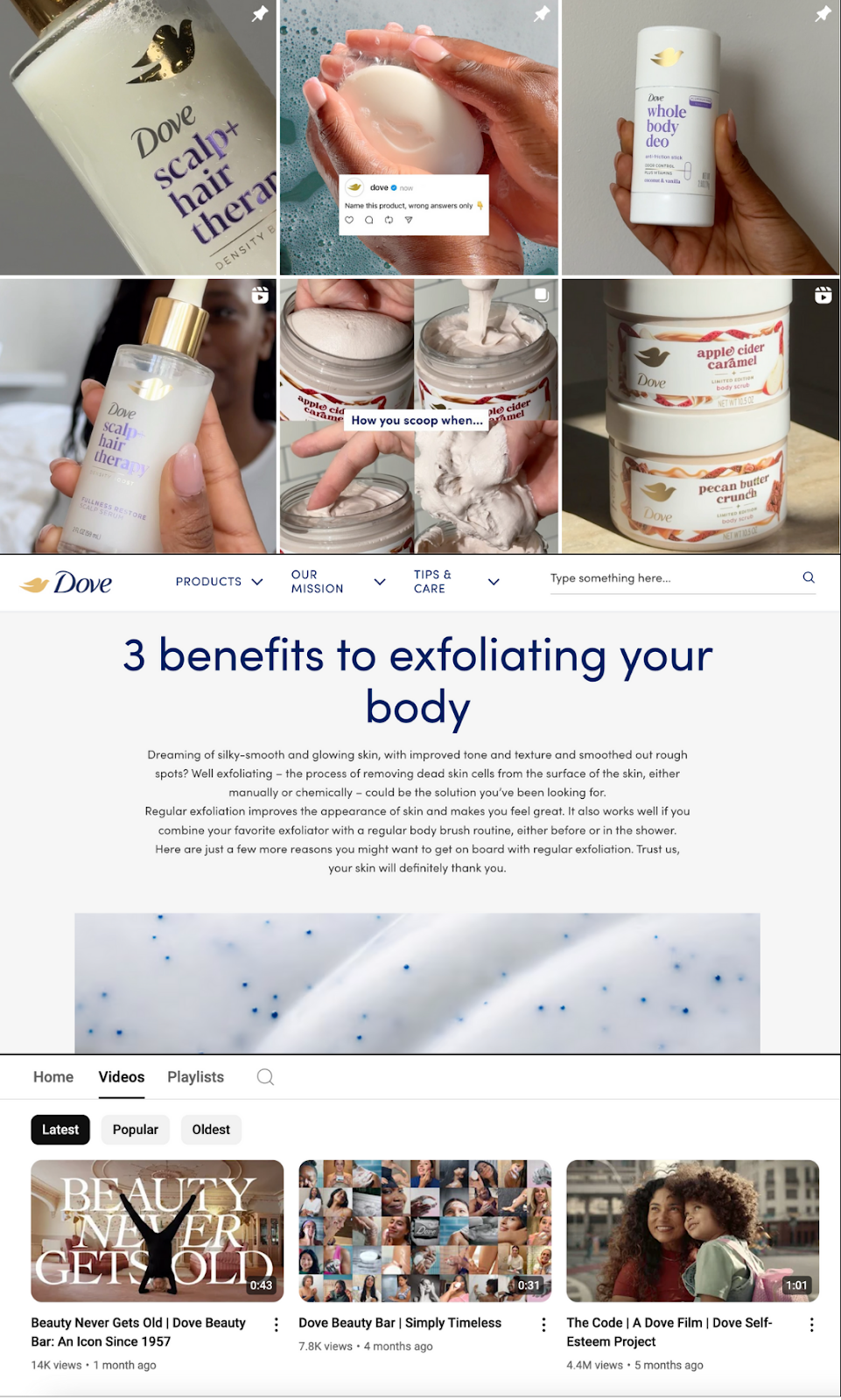
Their blog contains articles on body positivism and self-esteem. Their inspirational YouTube videos challenge beauty stereotypes. And their Instagram showcases real, unedited photos of women of all shapes and sizes.
Each content type serves a specific purpose. But together, they create a platform of empowerment and self-acceptance.
This approach helps Dove build a loyal community and positions their brand as more than just a soap.
Which means:
When someone shops for personal care products, they’re more likely to choose Dove.
Key benefits of content marketing include:
- Higher search engine rankings: Publishing and updating website content that’s created with search engines in mind can help you appear prominently in search results
- Increased organic traffic: Having your content appear prominently in search results often leads to more website visits
- Enhanced customer loyalty: Providing content that your audience finds valuable can foster trust and loyalty
- Increased conversion rates: engaging content can convert visitors into loyal customers
Further reading: Content Marketing Statistics You Need to Know
How Does Content Marketing Work?
Content marketing works by reaching the right audience at the right time. Which is largely about targeting each stage of the marketing funnel—from awareness to decision.
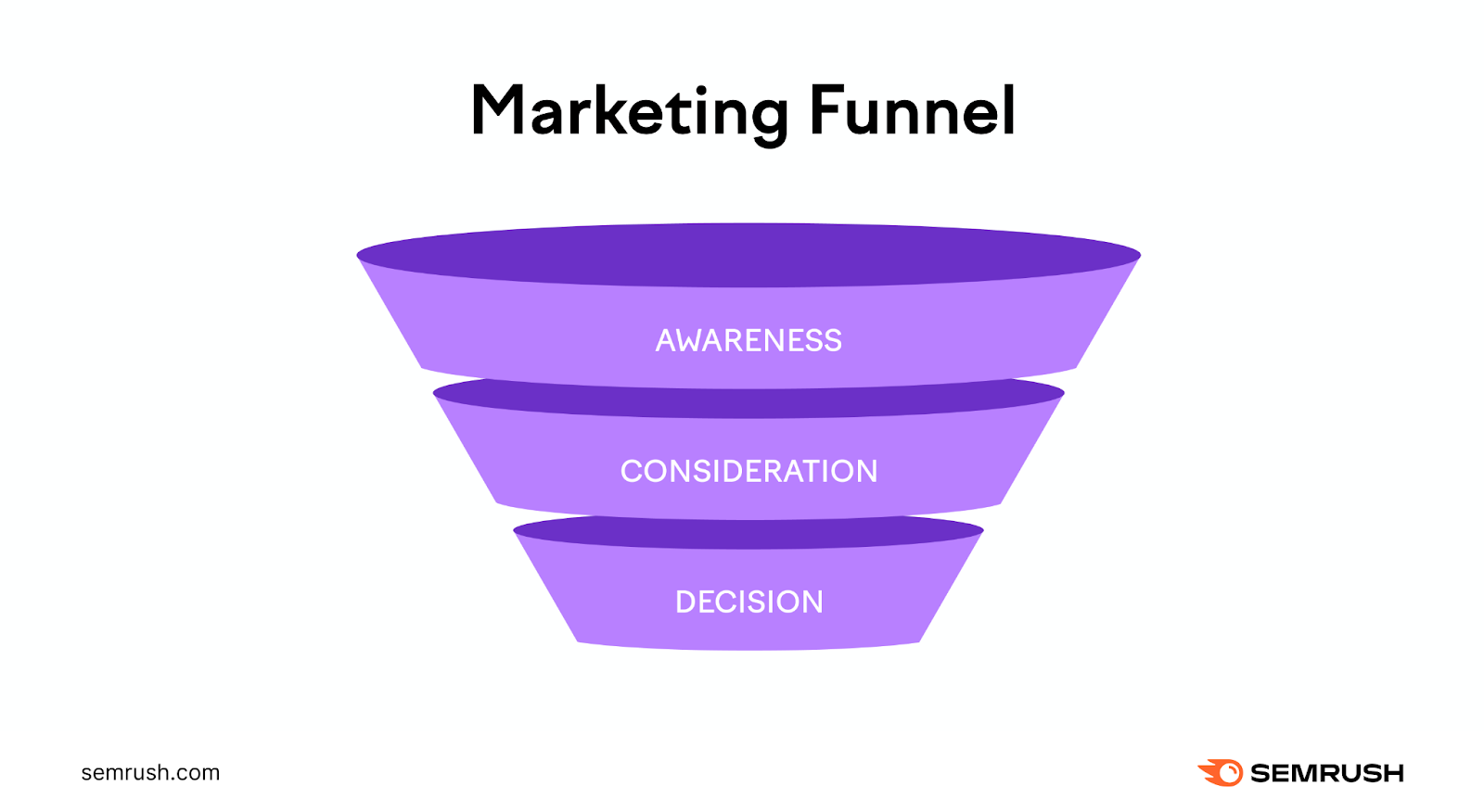
Awareness
At this stage, content marketing is all about creating awareness for your brand and your products or services.
Your potential customers are just realizing they have a problem. And your goal is to grab their attention.
You should create content that provides high-level education and has broad appeal. To attract as many relevant people as possible.
Effective content types for this stage can include:
- Blog posts
- Infographics
- Ebooks
- Social media posts
Example: The Squarespace blog helps businesses and entrepreneurs learn how to build their own websites.

And their blog brings in around 14.9K monthly visitors from organic search alone.
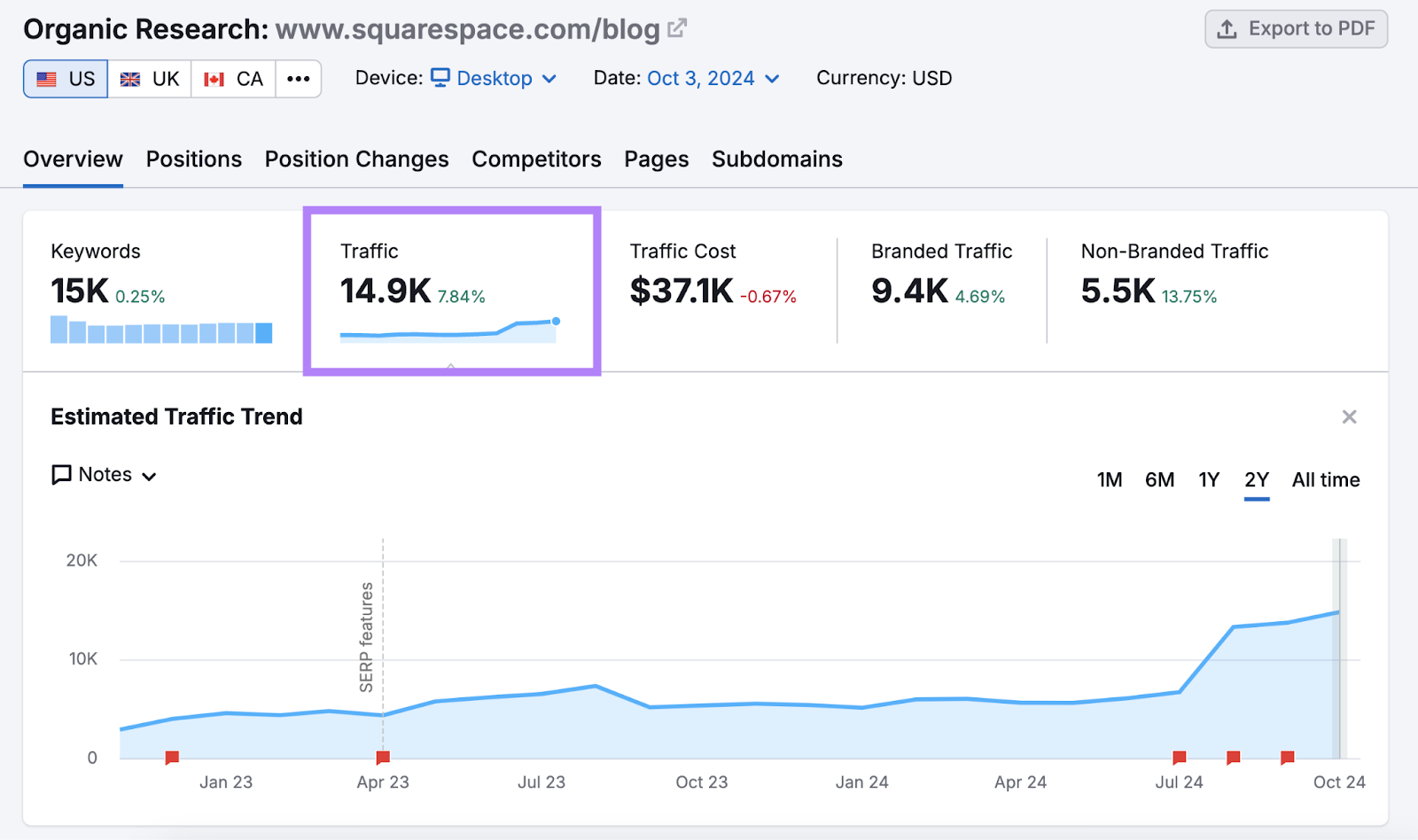
Image Data Source: Organic Research
Consideration
In the consideration stage, you can nurture leads and urge them to consider your business. Because your audience is actively researching solutions.
Your best bet is to create in-depth content that’s persuasive and explains what makes you stand out from the competition.
Effective content types at this stage:
- How-to guides
- Comparison articles
- Webinars
Example: Podia’s “alternatives” webpage with in-depth information about how their product compares to their closest competitors.
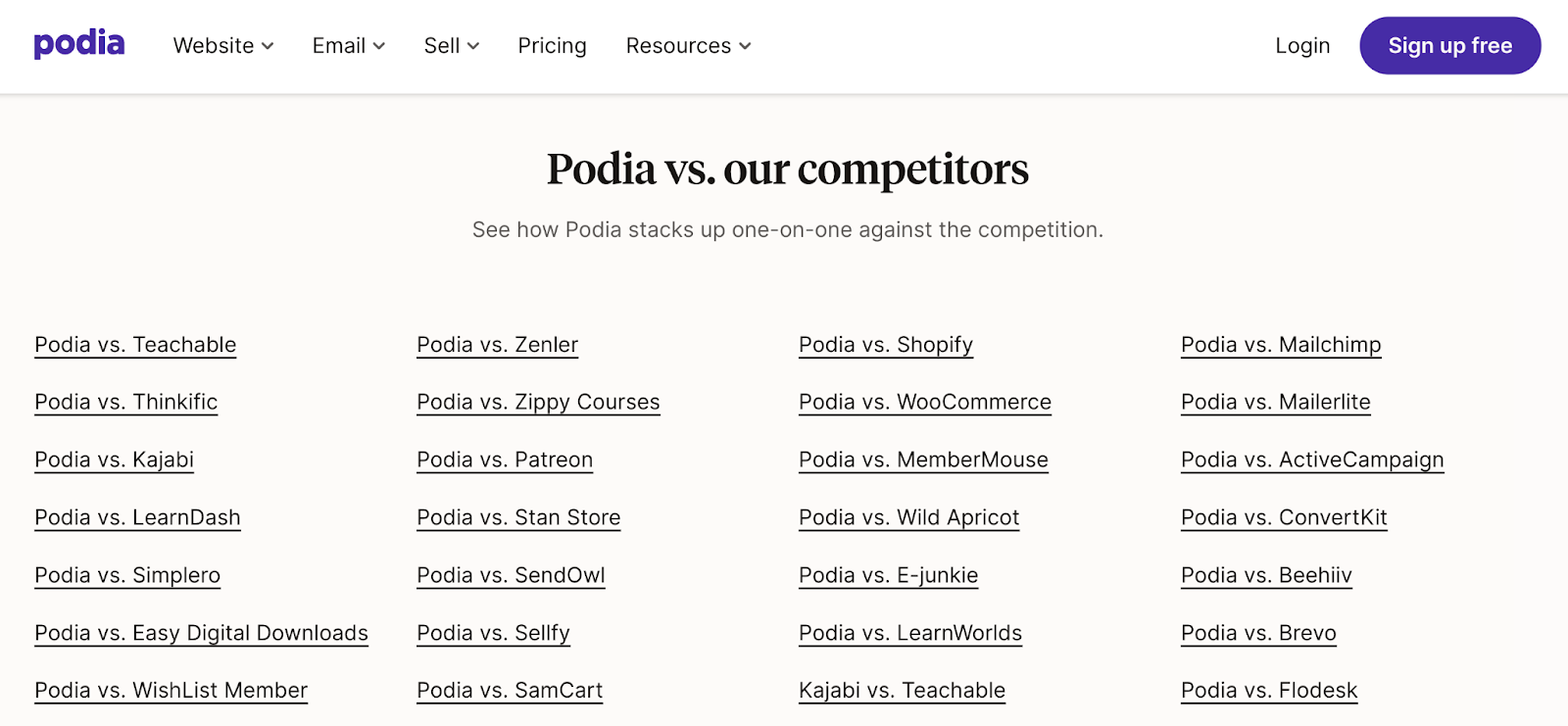
Decision
In this third and final stage, leads are ready to buy. So, provide leads with content that solidifies your value to give them the final push toward taking action.
You want to create content that instills a sense of urgency, addresses any objections, and makes it easy to take the next step.
Effective content types:
- Success stories
- Product demos
- Customer testimonials
Example: Gong’s YouTube channel highlights how real teams and businesses have benefited from using their tool.
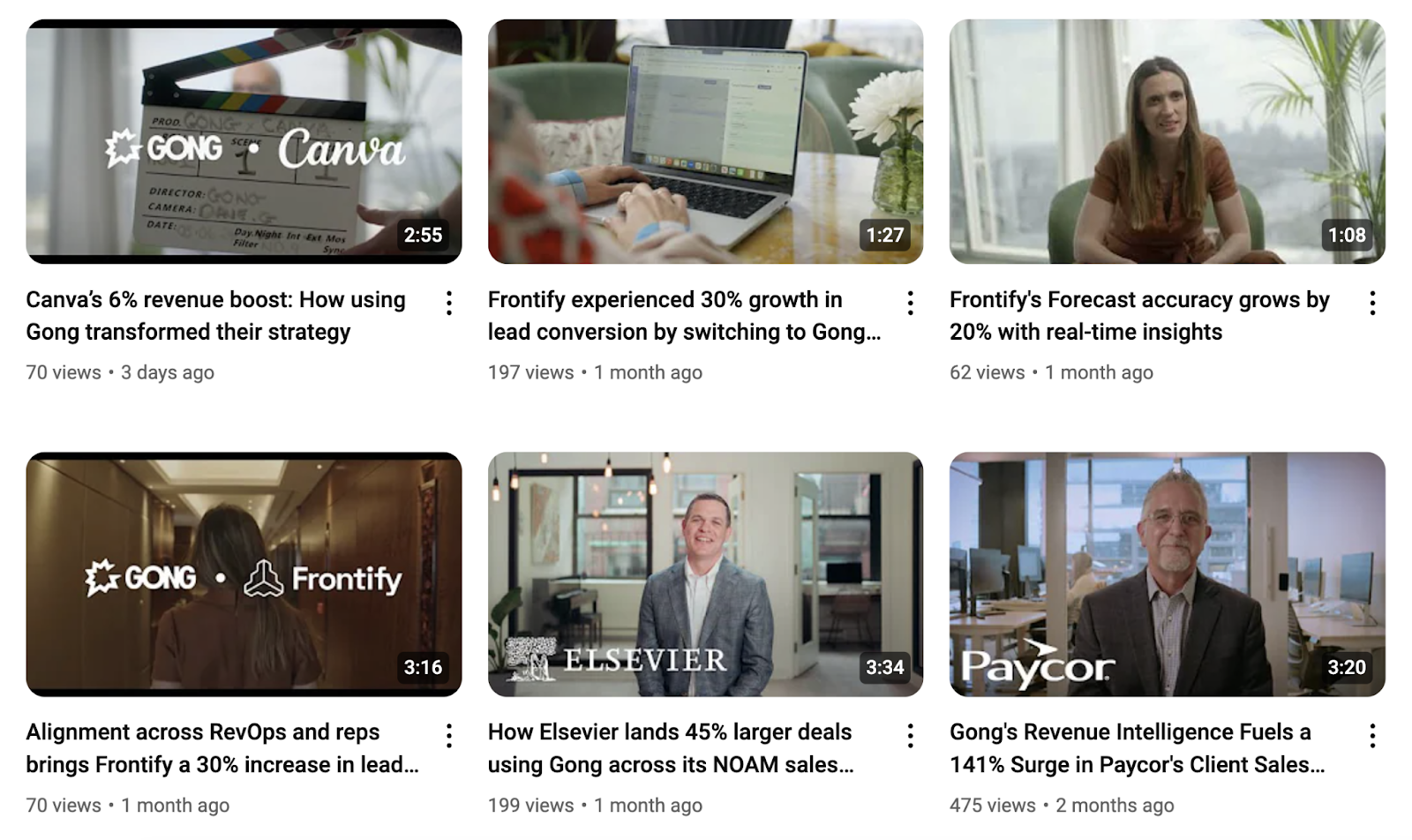
How to Get Started with Content Marketing
What does content marketing actually involve?
Let’s go over the main steps:
1. Define Your Goals & Audience
Before creating any content, you need to know two things: your goals and your audience.
Your goals are the specific outcomes you want to achieve with your content marketing.
For example, you might want to increase site traffic by a certain percentage or drive a specific number of leads in support of a larger company goal.
Your audience is the group of people you want to reach with your content.
For example, you might want to target bloggers in the food industry or recent college graduates seeking internships.
This step is critical.
And here’s why:
- Defining your goals and audience guides your entire content strategy
- A solid strategy helps create content likely to resonate with your audience
- Impactful, relevant content leads to better ROI
You can quickly find your target audience by analyzing competitor audiences with One2Target.
Enter up to five competitors’ domains, and the tool will gather information about their audiences’ demographics, socioeconomics, and behavior.
Like this:
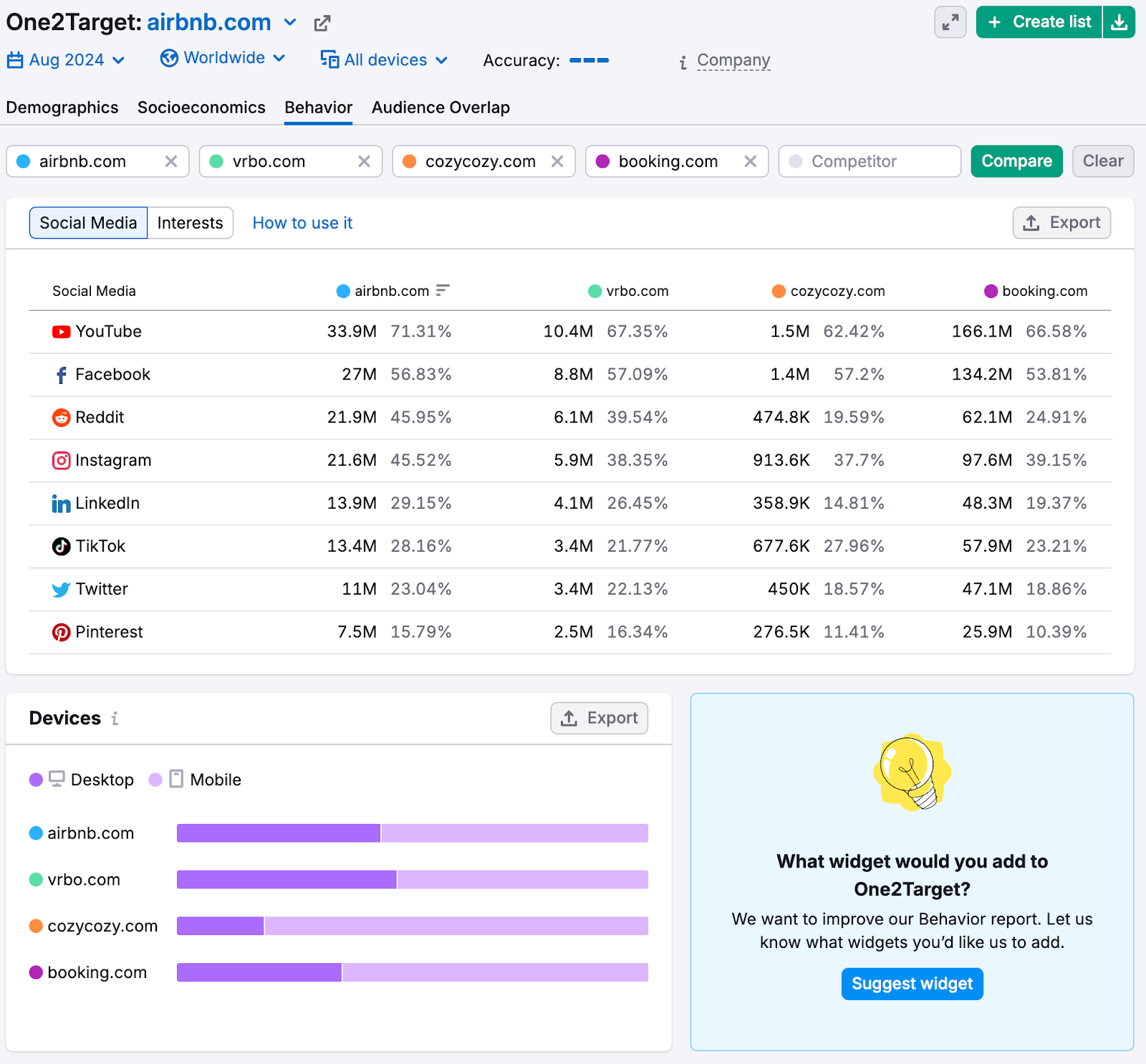
Here are some additional steps you can take to define your goals and audience:
- Review your current performance. What are your strengths and weaknesses? What are your opportunities and threats?
- Create your ideal customer personas. Who are they? What are their pain points, needs, and desires? How can you help them?
- Conduct a competitor analysis. Who are your main competitors? What are they doing well and poorly? How can you differentiate yourself from them?
- Set the right types of goals. Specific, measurable, achievable, relevant, and time-bound (SMART) goals make it easy to see whether you’re on track. For example, a SMART goal could be: “Increase organic traffic by 50% in the next six months.”
- Choose key performance indicators (KPIs) that measure progress. For example, common KPIs for content marketing are sessions, bounce rate, average engagement time, social shares, email subscribers, etc.
Further reading:
2. Choose the Right Content Formats
You’ve defined your goals and audience. Now, you need to choose the best content types for your content marketing efforts.
We discussed some of these earlier, including:
- Blog posts
- Ebooks
- Videos
- Podcast episodes
- Webinars
- Case studies
- Social media posts
Don’t know where to start?
A great way is to reverse-engineer your competitors’ content strategies. See what’s working for them and replicate it in a better way.
Open Organic Research, enter any competitor’s domain, and head to the “Pages” tab.
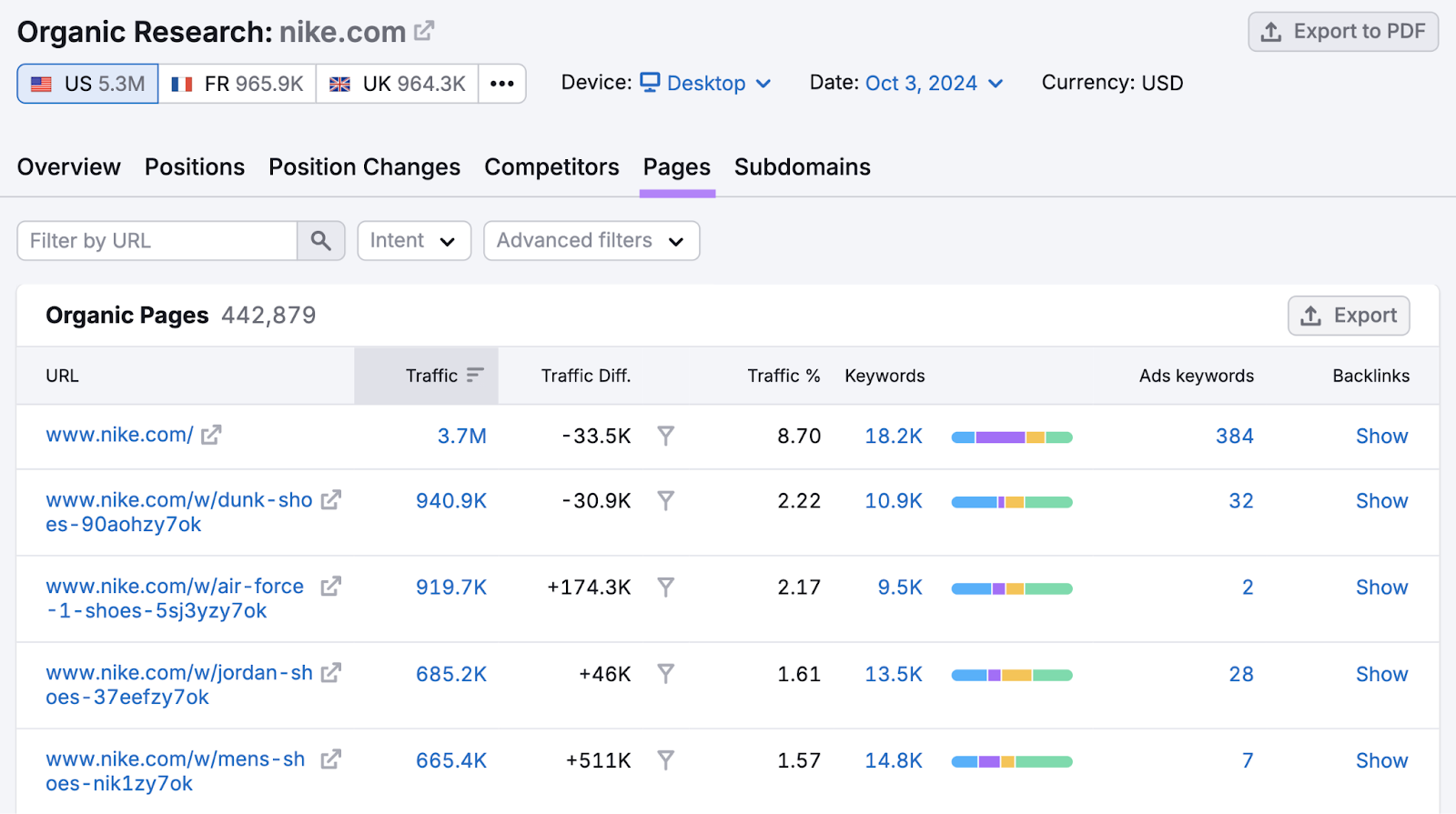
This is a list of your competitor’s pages, conveniently sorted by the estimated amount of organic traffic they bring in.
Click the icon next to the URL to see the actual page:
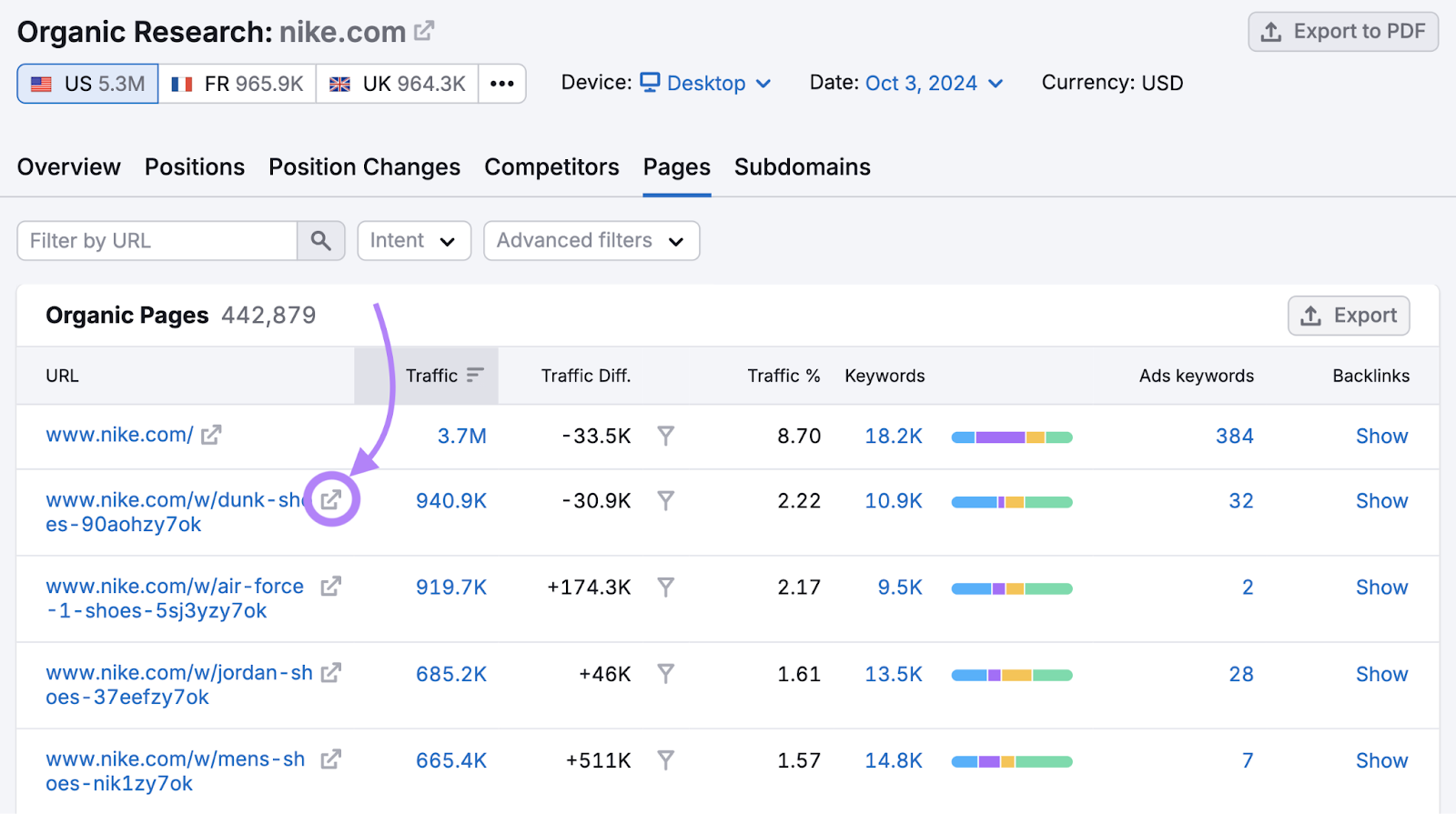
Browse through several of their top pages. And repeat this process for your main competitors.
As you do this, look for patterns.
For example:
- Do they use lots of visual assets?
- Is the content mostly long-form or short-form?
- Are the URLs mostly landing pages, ebooks, case studies, or something different?
Follow a similar process using Social Tracker to see what kinds of social media content your competitors post. And what resonates with their audiences the most.
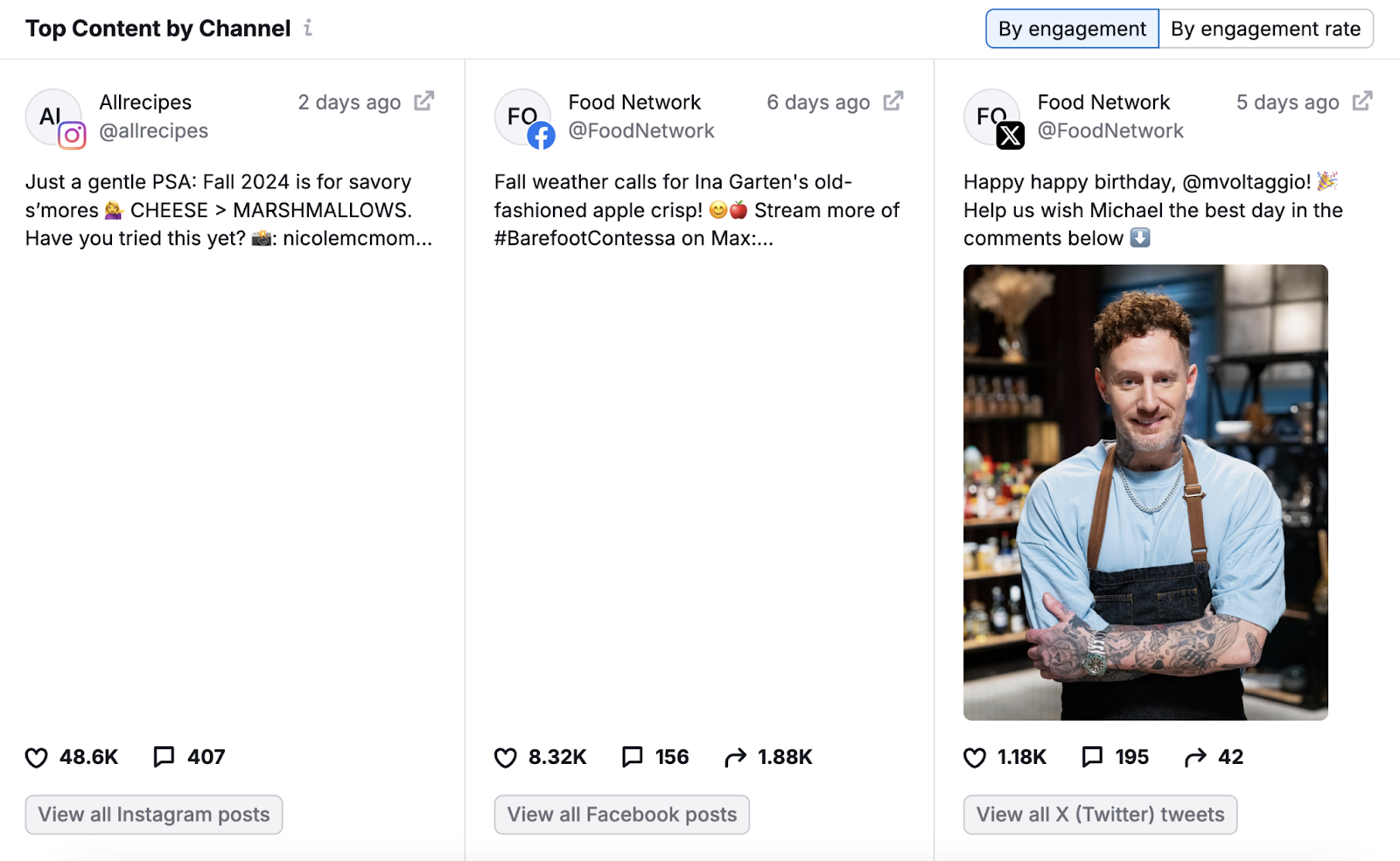
Again, review the content to look for patterns and ask questions. Then, use the answers to guide your content choices.
Here are some additional tips for deciding which content types to use:
- Align content types with your goals. Different content types have different purposes and benefits. For example, blog posts are great for driving traffic, ebooks are great for generating leads, and videos are great for increasing engagement.
- Align content types with audience segments. Some content types appeal to different segments. For example, some audiences prefer visual content, some prefer audio content, and some prefer interactive content.
- Experiment and optimize. You don’t need to stick to one content type. In fact, you shouldn’t. Mix and match to see what works best. Track KPIs and adjust accordingly.
Further reading: 17 Types of Content Marketing to Use for Success
3. Determine Your Content Topics
Start with keyword research to find content ideas that are relevant to your brand, popular, and possible to rank highly for.
An effective way to do this is to enter a topic related to your brand into Topic Research.
Then, click “Get content ideas.”
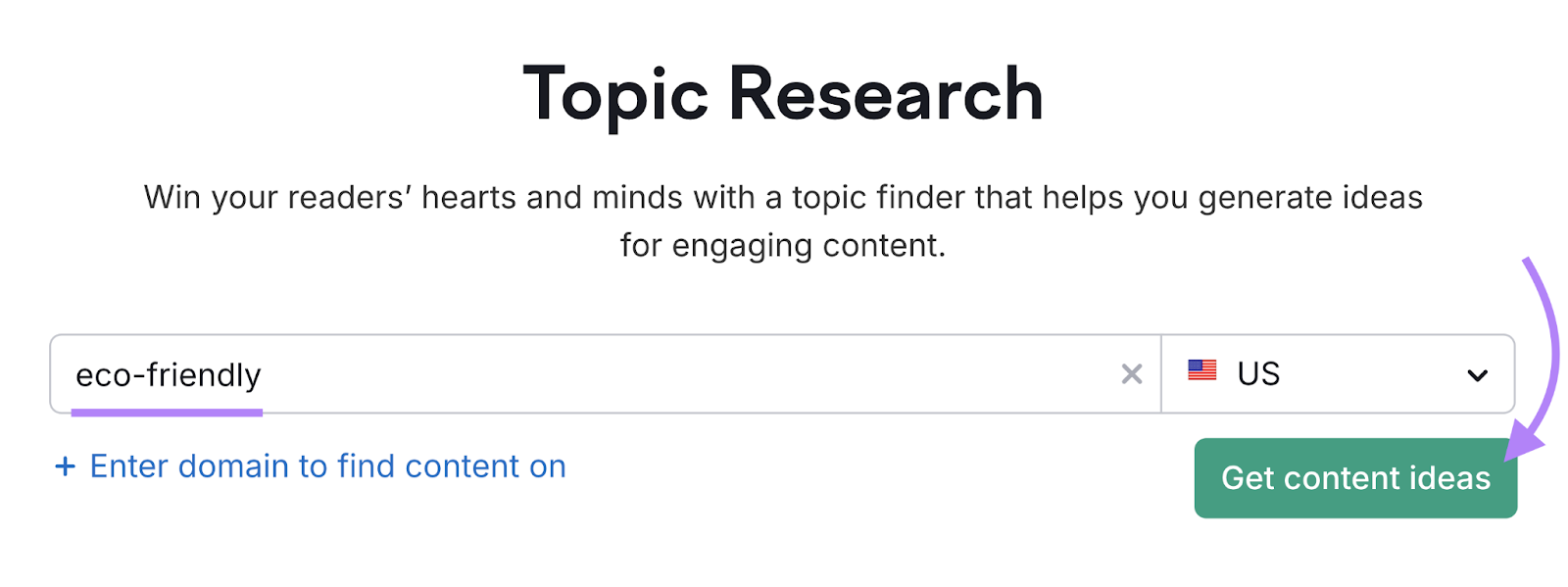
The tool will show related content ideas sorted by “Topic Efficiency.”
These are topics with high search volumes (a high number of average monthly searches) and low keyword difficulty (a low score that indicates you can feasibly rank for a given term).
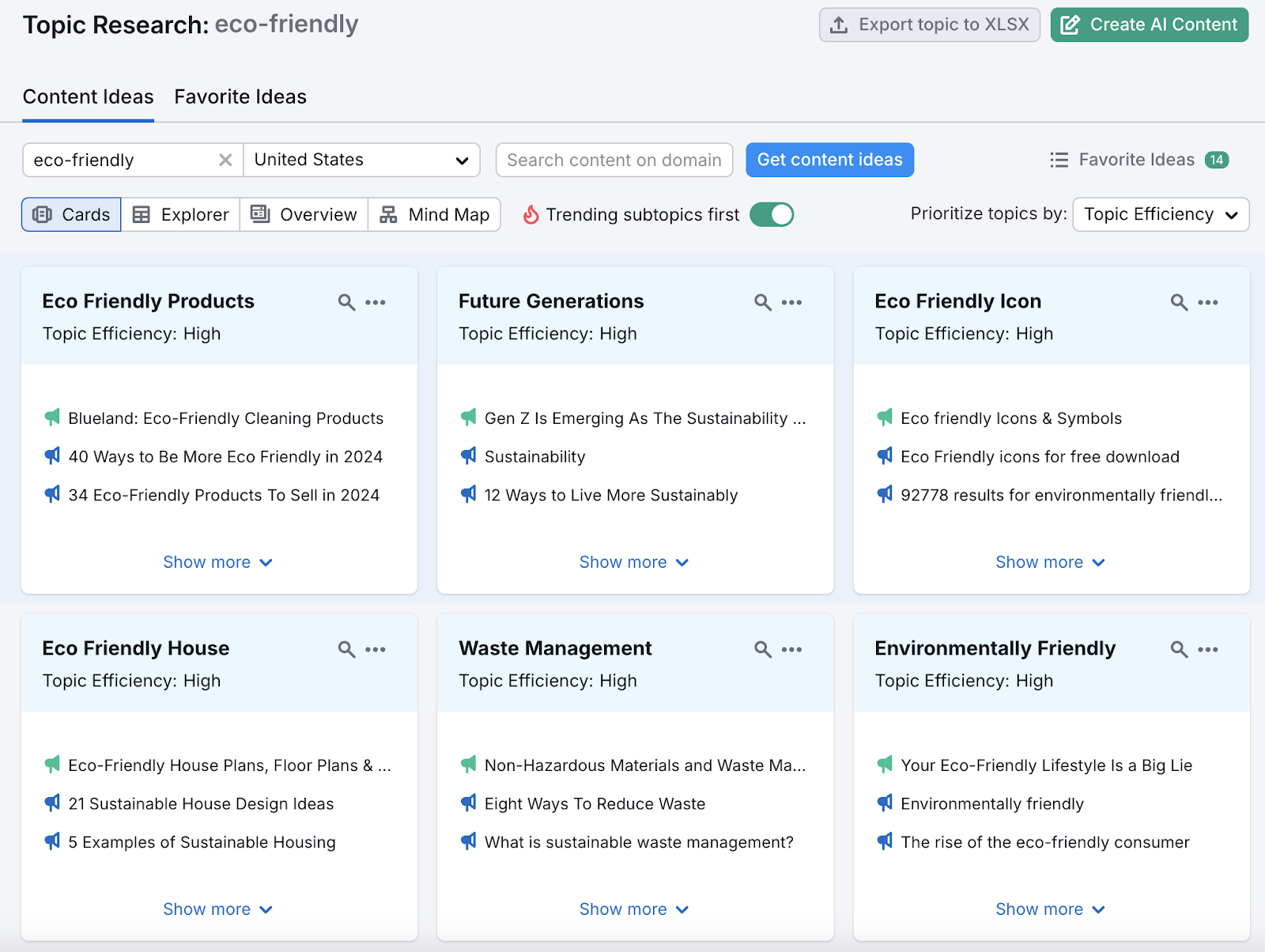
Click “Show more” on any card to see the search volume, difficulty score, popular headlines, related questions, and related searches for that topic.
Like this:
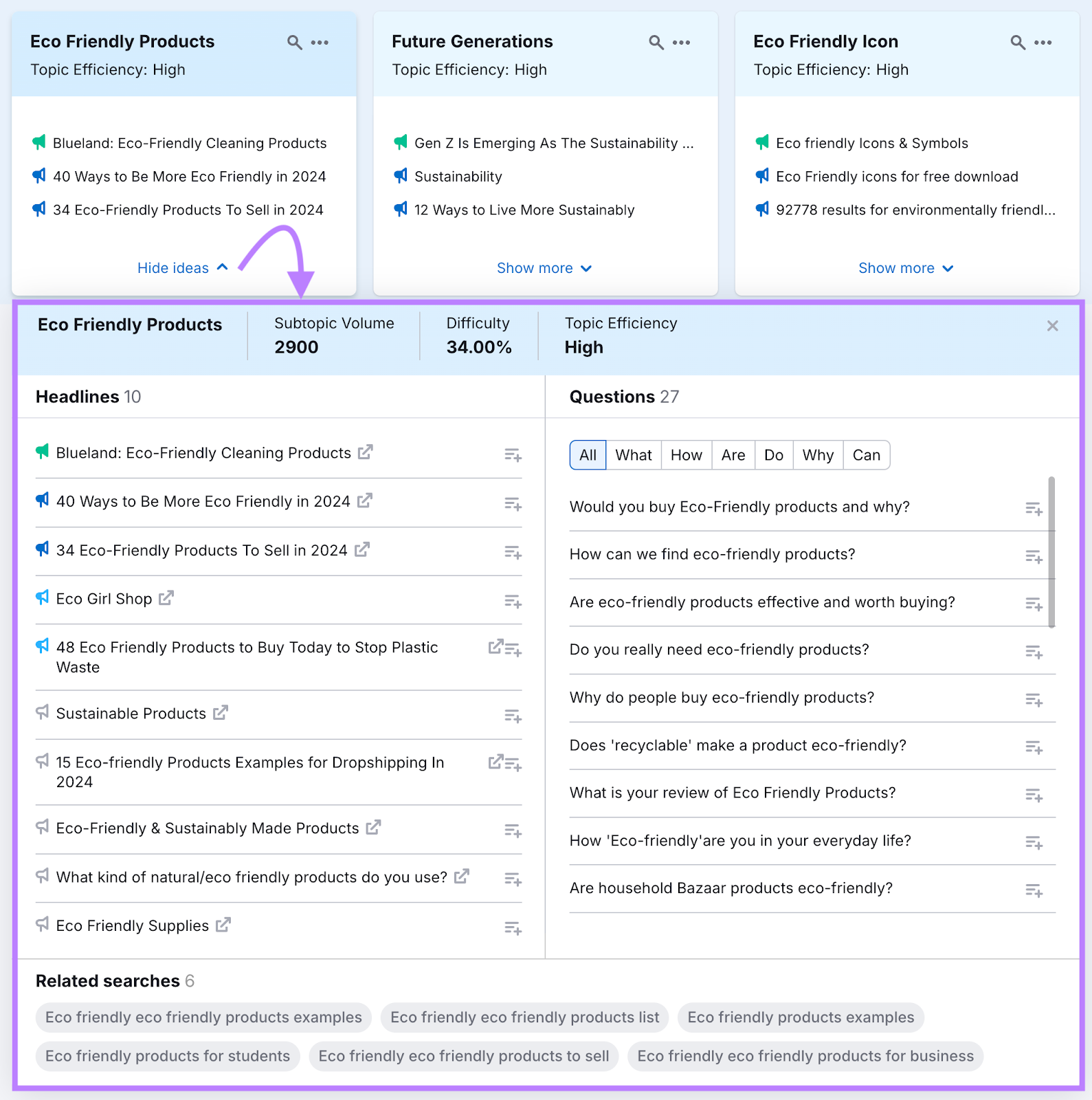
Use these ideas to create different content types around popular topics.
4. Create High-Quality Content
You’ve done the hard work involved in planning.
Now, it’s time to create some high-quality content.
This can differ by platform. But most high-quality website content is:
- Valuable to your audience
- Original and unique
- Well-researched and accurate
- Well-written and easy to read
- Well-designed and visually appealing
- Optimized for SEO and conversions
Once you’re ready to write, get help with the SEO Writing Assistant.
Start a new document by writing your content directly in the editor, copying and pasting it from another document, or importing it from a URL.
Then, fill out the remaining details and click “Get recommendations.”
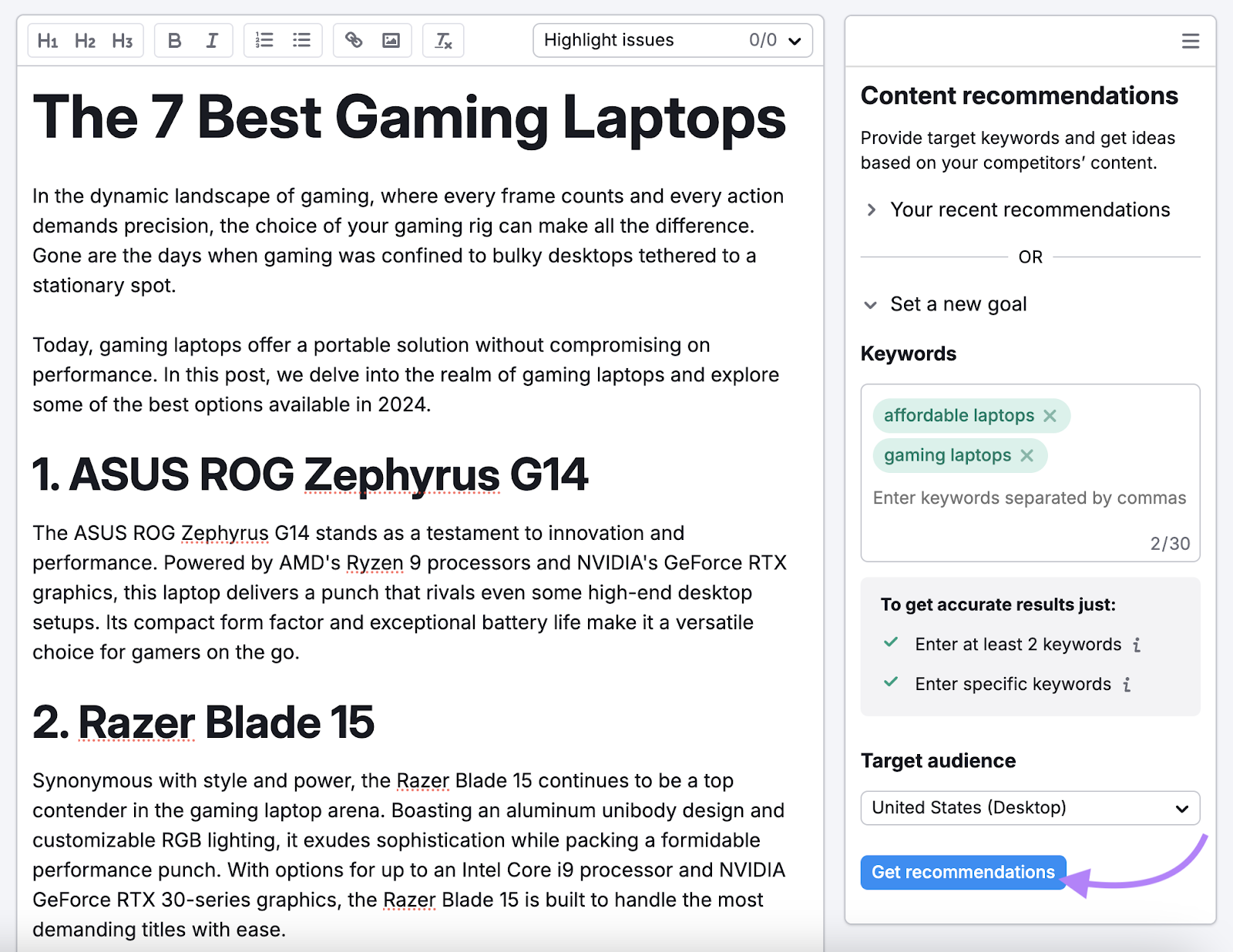
The tool will analyze top-ranking pages and provide recommendations regarding readability, originality, tone of voice, and SEO.
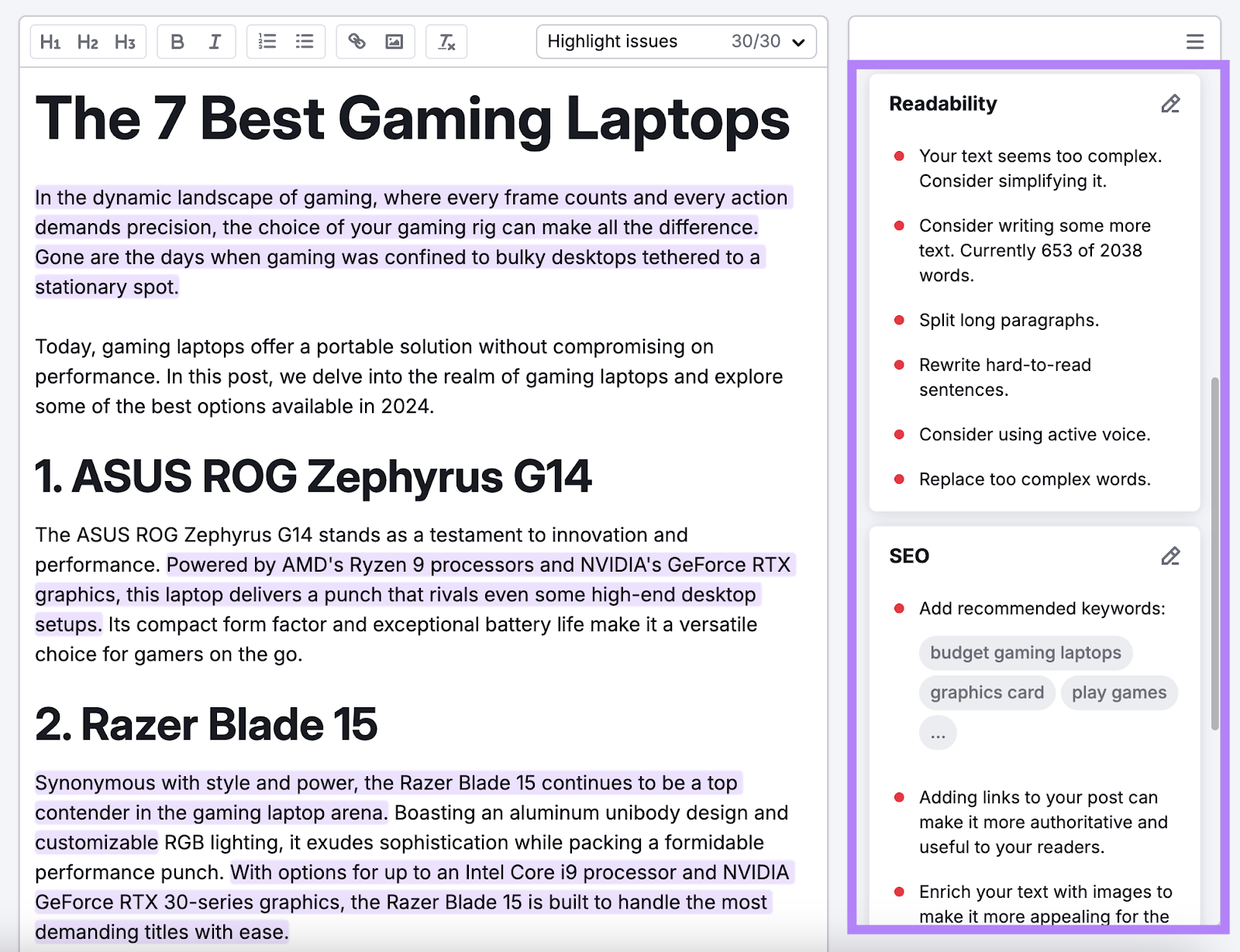
Adjust your content according to these recommendations.
And as you do, the tool will update its assessment.
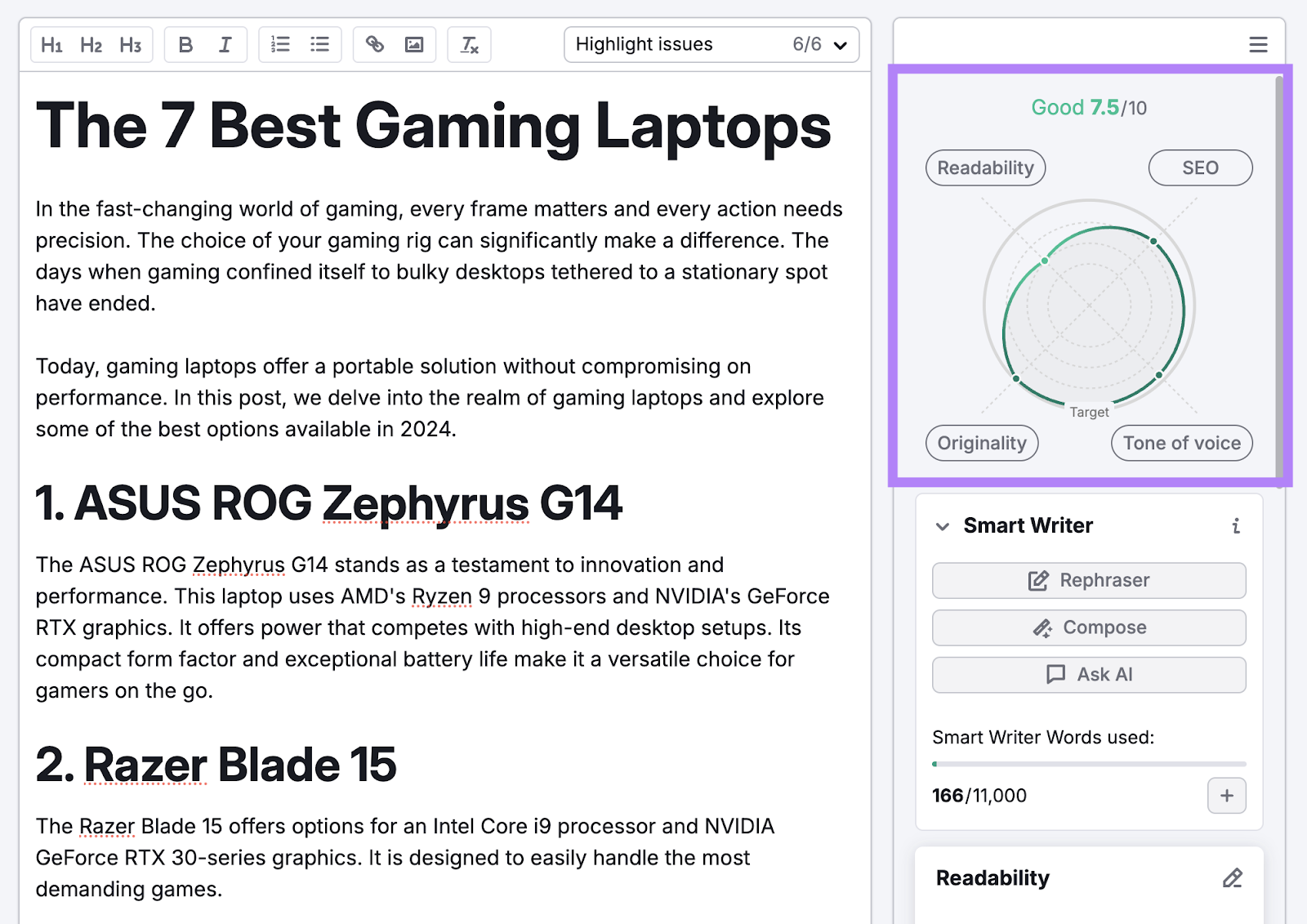
Here are a few options for creating other types of content:
- AI Social Content Generator to help you create and publish social content
- AI Video Marketing Automator to create videos using AI
- Landing Page Builder to build and launch landing pages at scale
Further reading: SEO Writing: 16 Tips for Creating SEO-Optimized Content
4. Share Your Content
Great content needs to be seen to do its job. Which is why promotion is so important.
Effective content promotion can increase visibility and attract potential customers.
Some content promotion tactics (many of which are content types themselves) include:
- Social media: Use your social media platforms to share stand-alone posts and promote content on your site that you want to drive more people to
- Paid advertising: Use Google Ads to quickly get your content in front of more people
- Email marketing: Send your subscribers new content and encourage them to read and share it
- Content syndication: Share your content on relevant, third-party sites to expand your reach
- Digital PR: Use tactics like media outreach to get your content featured in other publications
Not all of these will work for you.
So, make sure to prioritize the ones that align with your goals and your audience. And test and iterate often.
Further reading: The Ultimate Guide to Content Distribution (+ Examples)
5. Monitor and Analyze Your Results
Your final step is to monitor and analyze your results. So you can see how your content is performing and whether it’s helping you achieve your goals.
How?
Try following these steps:
- Use analytics tools. These are tools that can help you measure and track your content performance, such as Google Analytics, Google Search Console, and Semrush.
- Use feedback tools. These are tools that can help you collect and analyze feedback from your audience, such as SurveyMonkey, Hotjar, and UserTesting.
- Use reporting tools. These are tools that can help you create and share reports on your content results, such as Google Looker Studio, Tableau, or Power BI.
- Compare results with your goals. See how your content is performing against your SMART goals. Identify what’s working, what’s not, test, and iterate.
- Make data-driven decisions. Based on your results and analysis, decide what actions you need to take to improve your marketing content. For example, you might want to create more or less content, change your content types or channels, or optimize your content for SEO or conversions.
Develop Your Content Marketing Skills
This guide gives you a solid start. But mastering content marketing requires continuous learning and the right tools.
To build an effective strategy, you need to dive deeper into the nuances of content creation, SEO, and audience engagement.
Semrush offers free resources to boost your content marketing skills. Pair these with a free account to put your new knowledge into action.
